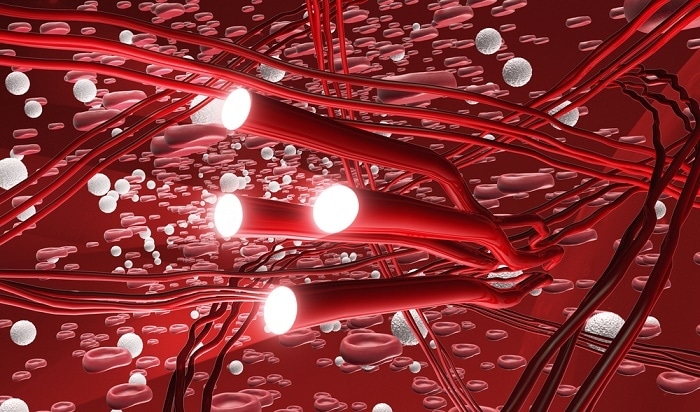Mar 15 2016
Atherosclerosis is a disease that causes a buildup of plaque in arteries. The disease is an invisible and prolific killer, but its ability to hide in the body and create havoc may soon be lost. A new nanoparticle has been developed by scientists, that acts as if it were a high-density lipoprotein (HDL). The nanoparticle can light up as well as treat the plaques that clog the arteries. This therapy technique can potentially assist to prevent strokes and heart attacks.
 Image Credit: Posteriori/Shutterstock.com
Image Credit: Posteriori/Shutterstock.com
The research work was presented at the American Chemical Society’s (ACS) 251st National Meeting & Exposition. ACS is the world’s largest scientific society, and the meeting will feature over 12,500 presentations on various scientific topics.
Other researchers have shown that if you isolate HDL components from donated blood, reconstitute them and inject them into animals, there seems to be a therapeutic effect. However, with donors' blood, there is the chance of immunological rejection. This technology also suffers scale-up challenges. Our motivation was to avoid immunogenic factors by making a synthetic nanoparticle which can functionally mimic HDL. At the same time, we wanted a way to locate the synthetic particles.
Shanta Dhar, Ph.D, University of Georgia
The detection techniques currently available do not always identify dangerous plaques, which can clog the arteries over time or rupture from arterial walls and end up blocking the blood flow, causing strokes or heart attacks. Although magnetic resonance imaging (MRI) allows plaque visualization, the approach needs a contrast agent to clearly display the atherosclerotic plaques. The risk of harmful immune reactions is still present due to the use of donor-derived HDL.
Other than imaging, a therapeutic aspect of using HDL exists. HDL is referred to as "good" cholesterol as it can pull low-density lipoprotein, or "bad" cholesterol, from the plaques. This effect shrinks the plaques, reducing the possibility of clogged or ruptured arteries.
To simultaneously identify and treat atherosclerosis, without triggering an immune response, Dhar and Bhabatosh Banik, Ph.D., a postdoctoral fellow in her lab, produced an MRI-active HDL mimic. The researchers, who are at the University of Georgia, Athens, had earlier created synthetic HDL particles without a contrast agent. These particles were able to reduce the levels of triglycerides and total cholesterol in mice.
The key challenge, then, was designing the contrast agent. It took time to figure out the optimal lipophilicity and solubility.
Bhabatosh Banik, Ph.D, University of Georgia
Iron oxide, the contrast agent, has to be formed in the synthetic HDL's hydrophobic core to provide a bright signal. The researchers developed the suitable chemical combination – iron oxide with a fatty surface coating – for the appropriate particle encapsulation. They successfully visualized the iron oxide contrast agent by employing MRI in cell studies.
The researchers are using the synthetic HDL to distinguish between stationary plaques and the unstable ones. For this purpose, Dhar used the synthetic MRI-active HDLs to target macrophages, also referred to as the white blood cells, which combine with cholesterol and lipids and form the atherosclerotic plaques.
The scientists targeted the macrophages, using a molecule to coat the nanoparticles' surfaces, so that the molecule binds to the macrophages in a selective manner. The research team witnessed that the nanoparticles were surrounded by the white blood cells.
Then, when the macrophages ruptured, which is a sign of an unstable plaque, the cells spit out the nanoparticles, causing the MRI signal to change in a detectable fashion.
Bhabatosh Banik, Ph.D, University of Georgia
Dhar’s lab is now employing MRI to study lighting up particles and treating plaques in animals. She expects to start clinical trials in two years.
The National Heart, Lung, and Blood Institute of the National Institutes of Health, and the American Heart Association funded the research.